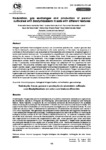Please use this identifier to cite or link to this item:
http://www.alice.cnptia.embrapa.br/alice/handle/doc/1055983Full metadata record
| DC Field | Value | Language |
|---|---|---|
| dc.contributor.author | MELO, E. B. S. de | pt_BR |
| dc.contributor.author | LIMA, L. M. de | pt_BR |
| dc.contributor.author | FERNANDES JUNIOR, P. I. | pt_BR |
| dc.contributor.author | AIDAR, S. de T. | pt_BR |
| dc.contributor.author | FREIRE, M. A. O. | pt_BR |
| dc.contributor.author | FREIRE, R. M. M. | pt_BR |
| dc.contributor.author | SANTOS, R. C. dos | pt_BR |
| dc.date.accessioned | 2016-11-08T11:11:11Z | pt_BR |
| dc.date.available | 2016-11-08T11:11:11Z | pt_BR |
| dc.date.created | 2016-11-08 | pt_BR |
| dc.date.issued | 2016 | pt_BR |
| dc.identifier.citation | Comunicata Scientiae, v. 7, n. 2, p. 160-166, 2016. | pt_BR |
| dc.identifier.uri | http://www.alice.cnptia.embrapa.br/alice/handle/doc/1055983 | pt_BR |
| dc.description | Nitrogen fertilization from biological source is an uncommon practice for peanut growers due to the limited results, mainly in environments with water restriction. In this study, the response of a commercial Bradyrhizobium was evaluated on the nodulation and production of peanuts grown in sandy and medium textured soils. Two experiments using different soils were carried out in the field during the dry season, in Campina Grande, Paraíba State, Brazil. Three peanut genotypes were submitted to the following treatments: 1-no nitrogen fertilization (control), 2- chemical fertilization (ammonium sulfate) and 3- inoculation with Bradyrhizobium [commercial strain BR 1405 (SEMIA 6144)]. A completely randomized 3x3 factorial design was adopted with five repetitions for both experiments. The evaluates variables were: height of the main stem, number of nodes/plant, root length, root dry weight, weight of pods/plant and number of pods/plant. In addition, gas exchanges were estimated using IRGA apparatus. Both genotypes (BRS Havana and L7 Bege) were benefited in relation to production due to an inoculation with SEMIA 6144. No physiological response was verified in genotypes or N-treatments to gas exchange, excepting for the Ci/Ca ratio in the medium textured soil experiment. BRS Havana showed low Ci/Ca ratio in Bradyrhizobium treatment, indicating that SEMIA 6144 improved the plants photosynthetic efficiency. | pt_BR |
| dc.language.iso | eng | eng |
| dc.rights | openAccess | eng |
| dc.subject | Fixação biológica de nitrogênio | pt_BR |
| dc.subject | Fertilização do solo | pt_BR |
| dc.subject | Troca gasosa | pt_BR |
| dc.subject | Biological nitrogen fixation | pt_BR |
| dc.subject | Soil fertilization | pt_BR |
| dc.title | Nodulation, gas exchanges and production of peanut cultivated with Bradyrhizobium in soils with different textures. | pt_BR |
| dc.type | Artigo de periódico | pt_BR |
| dc.date.updated | 2016-11-08T11:11:11Z | pt_BR |
| dc.subject.thesagro | Amendoim | pt_BR |
| dc.subject.thesagro | Solo | pt_BR |
| dc.subject.thesagro | Arachis Hypogaea | pt_BR |
| dc.subject.nalthesaurus | Gas exchange | pt_BR |
| dc.subject.nalthesaurus | Bradyrhizobium | pt_BR |
| riaa.ainfo.id | 1055983 | pt_BR |
| riaa.ainfo.lastupdate | 2016-11-08 | pt_BR |
| dc.identifier.doi | 10.14295/CS.v7i2.1449 | pt_BR |
| dc.contributor.institution | EMANUELLE BARROS SOBRAL DE MELO, State University of Paraiba, Campina Grande, PB; LIZIANE MARIA DE LIMA, CNPA; PAULO IVAN FERNANDES JUNIOR, CPATSA; SAULO DE TARSO AIDAR, CPATSA; MARIA ALINE OLIVEIRA FREIRE; ROSA MARIA MENDES FREIRE, CNPA; ROSEANE CAVALCANTI DOS SANTOS, CNPA. | pt_BR |
| Appears in Collections: | Artigo em periódico indexado (CPATSA)  | |
Files in This Item:
| File | Description | Size | Format | |
|---|---|---|---|---|
| PauloIvan2016.pdf | 270.72 kB | Adobe PDF |  View/Open |









